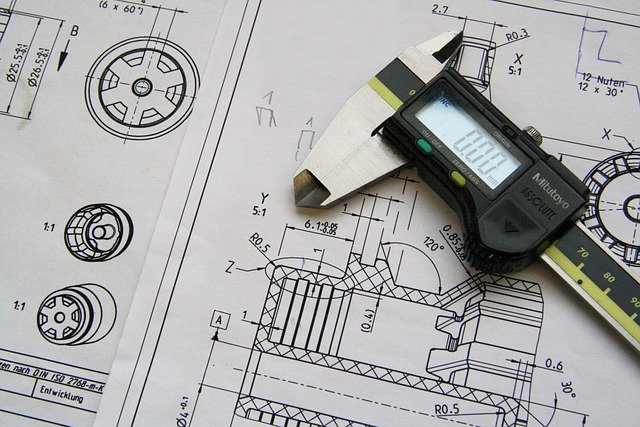Understanding Mechanical Engineering Training in Ohio
Mechanical engineering training in Ohio encompasses various programs designed to equip individuals with essential skills and knowledge in the field. This training is structured to provide a blend of theoretical understanding and practical application, preparing participants for roles in diverse industries. Different types of training programs are available, catering to varying levels of expertise and career goals.

Mechanical engineering remains one of the most versatile and in-demand engineering disciplines across Ohio’s manufacturing, automotive, aerospace, and energy sectors. The state’s educational institutions have developed robust training programs that combine theoretical knowledge with practical skills to prepare graduates for the challenges of modern engineering environments. Whether through four-year university degrees, two-year associate programs, or specialized certifications, Ohio offers multiple pathways for aspiring mechanical engineers to launch successful careers.
Overview of Mechanical Engineering Training in Ohio
Ohio boasts a rich industrial heritage that continues to influence its mechanical engineering education landscape. The state is home to numerous accredited institutions offering mechanical engineering programs, including major universities like Ohio State University, University of Cincinnati, and Case Western Reserve University. These institutions maintain close relationships with Ohio’s manufacturing and industrial sectors, ensuring their curricula remain relevant to employer needs. Many programs feature cooperative education components, allowing students to gain real-world experience through internships with companies across the state’s diverse industrial base.
Beyond traditional universities, Ohio’s community colleges and technical schools provide alternative educational pathways with more focused, hands-on training. These institutions often collaborate with local industries to develop programs addressing specific regional workforce needs. The state’s commitment to manufacturing excellence is reflected in specialized training centers equipped with state-of-the-art facilities, including advanced manufacturing labs, robotics workshops, and computer-aided design studios that simulate real-world engineering environments.
Common Structure of Mechanical Engineering Programs
Mechanical engineering programs in Ohio typically follow a structured curriculum that builds from fundamental principles to specialized applications. Bachelor’s degree programs generally span four years and begin with foundational courses in mathematics, physics, and general engineering principles. These core subjects establish the theoretical knowledge necessary for more advanced study. As students progress, they encounter increasingly specialized coursework in areas such as thermodynamics, fluid mechanics, materials science, mechanical design, and manufacturing processes.
The junior and senior years often feature design-intensive courses where students apply their knowledge to solve complex engineering problems. Most programs culminate in a capstone project that challenges students to design, build, and test a mechanical system or product. This project-based learning approach helps develop critical thinking, teamwork, and communication skills valued by employers. Throughout the curriculum, laboratory components provide essential hands-on experience with engineering tools, measurement techniques, and manufacturing equipment.
Many Ohio programs have adopted the ABET (Accreditation Board for Engineering and Technology) framework, ensuring graduates meet nationally recognized standards for engineering education. This accreditation is particularly important for students planning to pursue professional engineering licensure, which requires graduation from an ABET-accredited program as a prerequisite for the Professional Engineer (PE) examination process.
Types of Mechanical Engineering Training Available
Ohio offers diverse mechanical engineering training options to accommodate different career goals, time constraints, and learning preferences. Traditional four-year bachelor’s degrees remain the most comprehensive option, providing broad theoretical knowledge alongside specialized technical skills. These programs typically include general education requirements that develop communication abilities and critical thinking—skills increasingly valued in engineering roles requiring cross-functional collaboration.
For those seeking faster entry into the workforce, two-year associate degree programs focus on practical applications and technical skills. These programs, offered by community colleges and technical schools across Ohio, prepare graduates for roles as mechanical engineering technicians or for transfer to four-year institutions. Certificate programs provide even more specialized training in specific areas like CAD (Computer-Aided Design), CNC (Computer Numerical Control) machining, or additive manufacturing, often completing in less than a year.
Online and hybrid learning options have expanded significantly, allowing working professionals to advance their education while maintaining employment. These flexible programs often feature asynchronous coursework combined with intensive weekend laboratory sessions at physical campuses. Additionally, continuing education courses help practicing engineers stay current with emerging technologies and techniques, from 3D printing to sustainable design practices.
Specialized Training and Industry Connections
Ohio’s mechanical engineering programs often feature specialized tracks reflecting the state’s industrial strengths. Automotive engineering specializations are prominent, particularly in programs near major manufacturing centers. Aerospace engineering tracks leverage Ohio’s significant aviation industry presence, while energy systems specializations address the growing renewable energy sector. Manufacturing-focused programs emphasize advanced production techniques, automation, and Industry 4.0 concepts increasingly critical to Ohio’s manufacturing renaissance.
Many institutions maintain industry advisory boards that help shape curriculum development and identify emerging skill needs. These connections facilitate guest lectures from industry professionals, site visits to manufacturing facilities, and networking opportunities for students. Research partnerships between universities and companies create pathways for students to engage with cutting-edge technologies and real-world engineering challenges.
Professional Certification and Licensing Pathways
Beyond formal education, mechanical engineers in Ohio often pursue professional certifications to demonstrate specialized expertise. The path to becoming a licensed Professional Engineer (PE) in Ohio begins with earning an engineering degree from an ABET-accredited program, followed by passing the Fundamentals of Engineering (FE) exam. After gaining four years of qualifying engineering experience under a licensed PE’s supervision, candidates can take the Principles and Practice of Engineering (PE) exam to earn full licensure.
While not all mechanical engineering roles require PE licensure, it remains valuable for career advancement, particularly for engineers who approve plans or supervise projects affecting public safety. Beyond state licensure, specialized certifications from organizations like the American Society of Mechanical Engineers (ASME) or the Society of Manufacturing Engineers (SME) demonstrate expertise in specific technical areas and can enhance employment prospects in competitive specialties.
Career Outcomes and Employment Prospects
Mechanical engineering graduates from Ohio institutions enter a favorable job market, with employment opportunities spanning manufacturing, automotive, aerospace, energy, and consulting sectors. Entry-level positions typically include mechanical design engineer, product development engineer, manufacturing engineer, and quality assurance engineer roles. With experience, career paths can lead to specialized technical positions or management roles overseeing engineering teams and projects.
The median annual wage for mechanical engineers in Ohio generally aligns with national averages, with variations based on industry, location, and experience level. Graduates from programs with strong cooperative education components often report smoother transitions into full-time employment and slightly higher starting salaries due to their practical experience.
Ohio’s continued investment in advanced manufacturing, aerospace, and renewable energy creates ongoing demand for mechanical engineers with contemporary skills. As automation and digital technologies transform traditional industries, engineers with expertise in mechatronics, robotics, and digital manufacturing are particularly well-positioned for career growth in the state’s evolving industrial landscape.
Mechanical engineering training in Ohio continues to evolve, balancing traditional engineering fundamentals with emerging technologies and industry needs. The state’s diverse educational options provide multiple pathways for aspiring engineers to enter this rewarding field, whether through comprehensive university programs or specialized technical training. By maintaining strong connections between educational institutions and industry partners, Ohio ensures its mechanical engineering graduates are prepared to address the complex challenges of modern engineering environments and contribute to the state’s continued industrial innovation.




